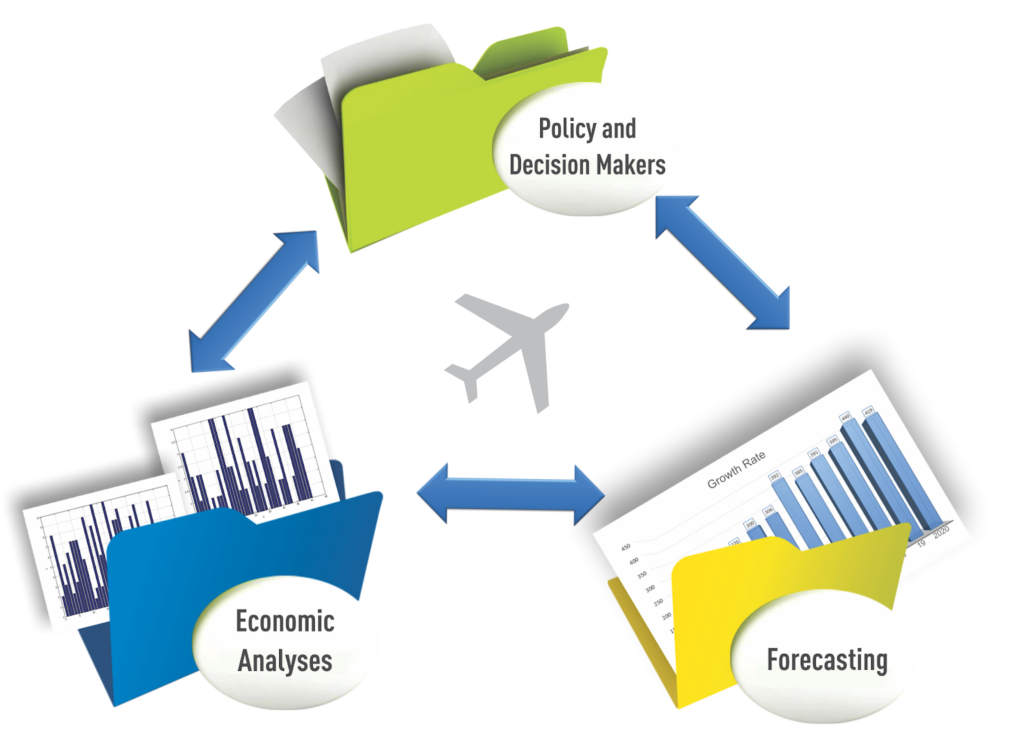In an era where data drives decision-making, the importance of real-time job market dataset in economic forecasting cannot be overstated. These Dataset provide invaluable insights into the current state of the economy, helping policymakers, businesses, and analysts make informed decisions. By offering a timely and detailed view of the labor market, real-time Dataset serves as a critical tool for gauging economic health and forecasting future trends.
What is Real-Time Job Market Dataset
Job market Dataset comprise continuously updated information on job postings, employment rates, wages, job vacancies, and other labor market indicators. Unlike traditional labor market data, which is often published with significant delays, real-time Dataset are collected and disseminated almost instantaneously. This immediacy allows stakeholders to respond to changes in the job market with unprecedented speed and accuracy.
The Role of Real-Time Job Market Dataset in Economic Forecasting

Source: ICAO
Real-time job market Dataset provides a wealth of information that is crucial for accurate economic forecasting. By offering up-to-date insights into labor market trends, these Dataset enable more precise predictions and responsive strategies.
1. Early Indicators of Economic Health
These Dataset are among the earliest indicators of economic health. Changes in employment trends, job vacancies, and wage levels often precede broader economic shifts. For instance, a sudden increase in job postings may signal business confidence and economic expansion, while a decline could indicate economic slowdown. By monitoring these Dataset, economists and policymakers can detect early signs of economic changes and adjust their forecasts accordingly.
2. Enhanced Decision-Making for Policymakers
Policymakers rely heavily on accurate and timely data to formulate effective economic policies. The Dataset provides them with the latest insights into labor market conditions, enabling them to make informed decisions. For example, if real-time data shows a sharp rise in unemployment in a particular region, policymakers can implement targeted interventions, such as job training programs or economic stimulus measures, to address the issue promptly.
3. Improving Business Strategies
Businesses also benefit significantly from real-time job market Dataset. These Dataset help companies understand labor market dynamics, such as the availability of skilled labor, prevailing wage rates, and employment trends. This information is crucial for strategic planning, workforce management, and competitive positioning. For instance, a tech company planning to expand its operations can use real-time job market data to identify regions with a high concentration of tech talent, thereby optimizing their recruitment efforts.
4. Supporting Labor Market Analysis
Labor market analysts and researchers use job dataset to conduct comprehensive studies on employment trends, wage patterns, and job vacancy dynamics. These analyses provide valuable insights into the functioning of the labor market and help identify emerging trends and challenges. For example, real-time data can reveal shifts in demand for specific skills or occupations, guiding education and training programs to align with market needs.
Real-Time Job Market Data Case Studies
To illustrate the practical benefits of having quality job data, let’s examine how they have been applied in real-world scenarios. These case studies highlight the impact of timely labor market data on economic decision-making and policy responses.
1. COVID-19 Pandemic Response
The COVID-19 pandemic underscored the importance of Dataset. As the pandemic disrupted economies worldwide, traditional labor market data failed to capture the rapid changes in employment conditions. Real-time Dataset, however, provided timely insights into job losses, remote work trends, and sectoral shifts. This information was crucial for governments and businesses to implement responsive measures, such as unemployment benefits, remote work policies, and economic stimulus packages.
2. Economic Recovery Tracking
In the aftermath of economic crises, real-time job dataset plays a vital role in tracking recovery. For example, during the 2008 financial crisis, real-time data on job postings and employment rates helped analysts and policymakers monitor the pace of economic recovery. By comparing real-time data with historical trends, they could identify sectors that were recovering faster and those that needed additional support.
Real-Time Job Market Dataset Challenges & Considerations

While real-time job market Dataset in economic forecasting offers numerous benefits, they also come with challenges and considerations:
1. Data Quality and Reliability
Ensuring the quality and reliability of real-time job market data is crucial. Inaccurate or incomplete data can lead to erroneous conclusions and misguided decisions. Therefore, data providers must implement rigorous data collection and validation processes to maintain the integrity of real-time Datasets.
2. Data Privacy and Ethical Concerns
The collection and use of real-time job market data raise privacy and ethical concerns. It is essential to adhere to data protection regulations and ethical guidelines to safeguard the privacy of individuals and organizations. Transparent data collection practices and informed consent are key to addressing these concerns.
3. Integration with Other Data Sources
For comprehensive economic forecasting, these datasets should be integrated with other data sources, such as financial data, consumer spending data, and macroeconomic indicators. This integration provides a holistic view of the economy and enhances the accuracy of forecasts.
Future of Real-Time Job Market Dataset
The future of the real-time job market Dataset in economic forecasting looks promising, with advancements in data collection technologies, machine learning, and artificial intelligence. These technologies can enhance the accuracy, granularity, and timeliness of job market data, providing even deeper insights into labor market dynamics.
1. AI and Machine Learning Integration
AI and machine learning algorithms can process vast amounts of real-time job market data, identify patterns, and generate predictive insights. For example, machine learning models can predict future job market trends based on historical data and current indicators, helping businesses and policymakers stay ahead of the curve.
2. Greater Granularity and Customization
Future of job market Dataset will offer greater granularity and customization. Users will be able to access detailed data on specific regions, industries, and occupations, tailored to their unique needs. This customization will enable more targeted analysis and decision-making.
3. Global Data Coverage
As globalization continues to shape labor markets, the demand for real-time job market data with global coverage will increase. Future Dataset will provide insights into international labor market trends, helping businesses expand their operations and policymakers address global economic challenges.
Conclusion
In conclusion, real-time job market Dataset in economic forecasting are invaluable, providing timely and accurate insights into labor market conditions. By serving as early indicators of economic health, enhancing decision-making for policymakers, improving business strategies, and supporting labor market analysis, these Dataset play a crucial role in navigating the complexities of the modern economy. As technology continues to evolve, the value and capabilities of real-time Dataset will only grow, making them an indispensable tool for economic forecasting and decision-making.
Discover the edge with JobsPikr’s precise and timely job posting datasets. Partner with us for unparalleled labor market insights. Contact us today!



